
Narcisa de Jesús Martillo Morán was an Ecuadorian Catholic virgin. Martillo was known for her charitable giving and strict devotion to Jesus Christ while living a virginal and austere life of prayer and penance. The death of her parents prompted her to relocate in order to work as a seamstress while caring for the sick and poor. But her devotion to prayer and the mortification of the flesh was strong and it led her to the decision to live as a member of the Third Order of Saint Dominic in Patrocínio, (Peru) in June 1868, where she died on 8 December 1869.
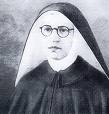
Blessed Maria Pierina De Micheli was a Roman Catholic religious Sister who was born near Milan in Italy. She is best known for her association with the Holy Face of Jesus and for introducing a medal bearing an image from the Shroud of Turin as part of this devotion.
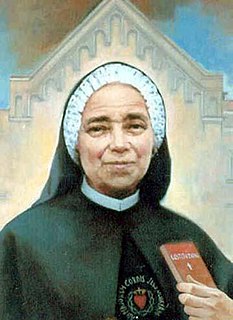
Giulia Salzano was an Italian Roman Catholic professed religious and the founder of the Catechetical Sisters of the Sacred Heart of Jesus (1905). Salzano served as a teacher prior to becoming a religious and since 1865 worked in Casoria as a teacher for children where she demonstrated herself as an apt catechist and instructor.

Bernardo Francisco de Hoyos de Seña, best known simply as Bernardo de Hoyos, was a Spanish Roman Catholic priest, mystic and a professed member of the Society of Jesus. He is best known for his ardent devotion to the Sacred Heart and for his constant promotion of it until his premature death.
Blessed Bruna Pellesi, known as Maria Rosa of Jesus, was an Italian nun who was a member of the Franciscan Missionary Sisters of Christ. Pellesi served as an educator in places such as Sassuolo until she contracted tuberculosis and was moved to various sanatoriums for recuperation until the end of her life when she died in her convent.

Blessed Maria Pia Mastena - born Teresa Maria - was an Italian Roman Catholic professed religious and the founder of the Religious Sisters of the Holy Face. Mastena fostered a deep devotion to the Holy Face of Jesus and tried to promote that devotion to others in her religious career as a nun. Mastena first desired the contemplative life but was denied this after she entered the convent since it was not a cloister. Instead she dedicated herself to teaching in several Italian cities after having left another convent and another religious order when she deemed contemplative life was not the life she felt God wanted for her. Her labors were dedicated instead to consolidating her new religious order which began to grow after World War II until her sudden death in 1951.
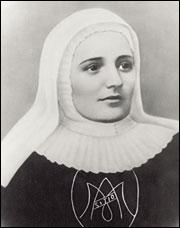
Laura Montoya – known in religion as Laura of Saint Catherine of Siena – was a Colombian Roman Catholic religious sister and the founder of the Congregation of the Missionary Sisters of the Immaculate Virgin Mary and Saint Catherine of Siena (1914). She was well known for her work with Indigenous peoples and for acting as a strong role model for South American girls.
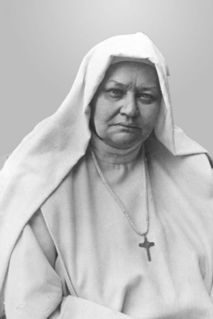
Maria Teresa Casini was an Italian nun and was the founder of the Oblate Sisters of the Sacred Heart of Jesus. The order was devoted to providing care for those around them with an added emphasis on demonstrating the love of Jesus Christ while spreading the message of the Gospel to the public.
Maria Bolognesi was an Italian Catholic. Throughout her life she suffered from debilitating diseases and was reportedly subject to various demonic possessions and visions. Her numerous visions were of Jesus Christ and through him saw Heaven while also receiving the stigmata herself.

Maria Grazia Tarallo was an Italian Roman Catholic nun. She was a member of the congregation known as the Crucified Sisters Adorers of the Holy Eucharist. Tarallo was given the new name of "Maria of the Passion of Our Lord Jesus Christ" upon the occasion of her solemn profession. She was well known for her charitable nature as well as her strong devotion to the Eucharist.

Blessed Costanza Starace was an Italian Roman Catholic nun. She was the founder of the religious congregation known as the Compassionist Sisters Servants of Mary. Starace later assumed the new name of "Maria Maddalena of the Passion" upon the occasion of her solemn profession. She became a secular member of the Servite Order after she failed to join a religious order.
Maria Anna Rosa Caiani was an Italian Roman Catholic nun from Florence who established the Minim Sisters of the Sacred Heart in 1902. Caiani assumed the religious name of "Maria Margherita of the Sacred Heart" in 1902 after she professed into her new congregation that was devoted to the Sacred Heart of Jesus Christ.

Leopoldina Naudet was an Italian Roman Catholic of both French and Austrian origins. She was a professed religious of the now-extinct Congregation of Dilette of Jesus and served as the foundress of the Sisters of the Holy Family of Verona. Naudet served in the court of Leopold II, Holy Roman Emperor and after his death served his daughter Maria Anna who became an abbess and professed religious alongside Naudet and her sister.

Rafaela Porras Ayllón was a Spanish Roman Catholic professed religious who established the Handmaids of the Sacred Heart of Jesus in conjunction with her sister Dolores ; upon becoming a nun she assumed the religious name of "Mary of the Sacred Heart of Jesus". She was a nun for most of her life and devoted herself to the management of the congregation and resided in Rome until her death after her resignation as the order's superior in 1893.

María Angélica Pérez was an Argentine Roman Catholic professed religious and a member of the Daughters of Our Lady of the Garden. Upon becoming a nun she assumed the name of "María Crescentia". She also was known to ill people as "Sister Sweetness".
Clotilde Micheli was an Italian Roman Catholic professed religious who established the order known as the Sisters of Angels; she assumed the new name of "Maria Serafina of the Sacred Heart" upon the order's foundation and her profession into it. She had once before been part of a religious order in which she received the name of "Maria Annunziata" but discarded it when she left their ranks.
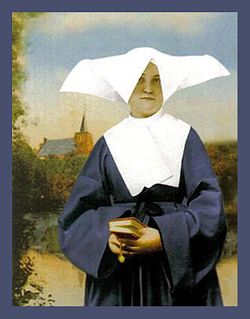
Marta Anna Wiecka was a Polish Roman Catholic nun of the Vincentian Sisters. She assumed the name of "Maria" upon taking her vows. Wiecka worked throughout her life as a nurse in various hospitals in both Poland and in the Ukraine.
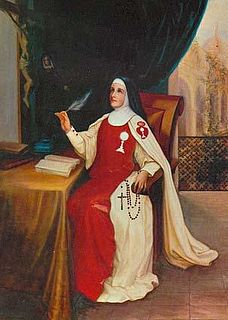
Caterina Sordini was an Italian Roman Catholic professed religious that established the Sisters of Perpetual Adoration, in latin Adoratrices Perpetuae Sanctissimi Sacramenti, devoted to the Eucharist. She assumed the religious name of "Maria Maddalena of the Incarnation" when she became a member of the Third Order of Saint Francis during her adolescence.

Marie Deluil-Martiny, religious name Marie of Jesus, was a French religious sister and the founder of the Daughters of the Heart of Jesus. The convent's gardener murdered her in 1884. She has been beatified by Pope John Paul II. in 1989.

Manuela de Jesús Arias Espinosa, also known by her religious name María Inés Teresa of the Blessed Sacrament, was a Mexican Roman Catholic professed religious and the founder of both the Poor Clare Missionary Sisters of the Blessed Sacrament (1945) and the Missionaries of Christ for the Universal Church (1979). She lived during the time of the Cristero War and remained out of the nation during some of it in order to avoid the anti-religious persecution of the times.















